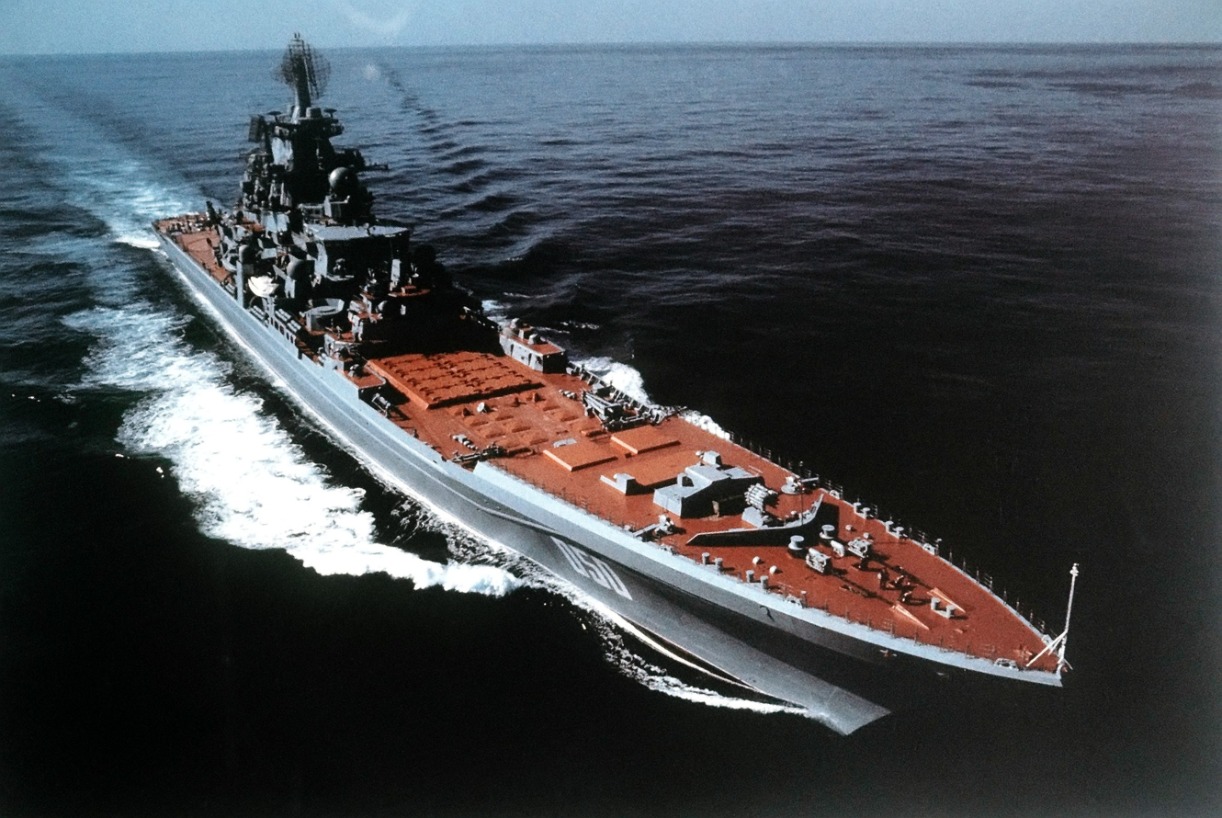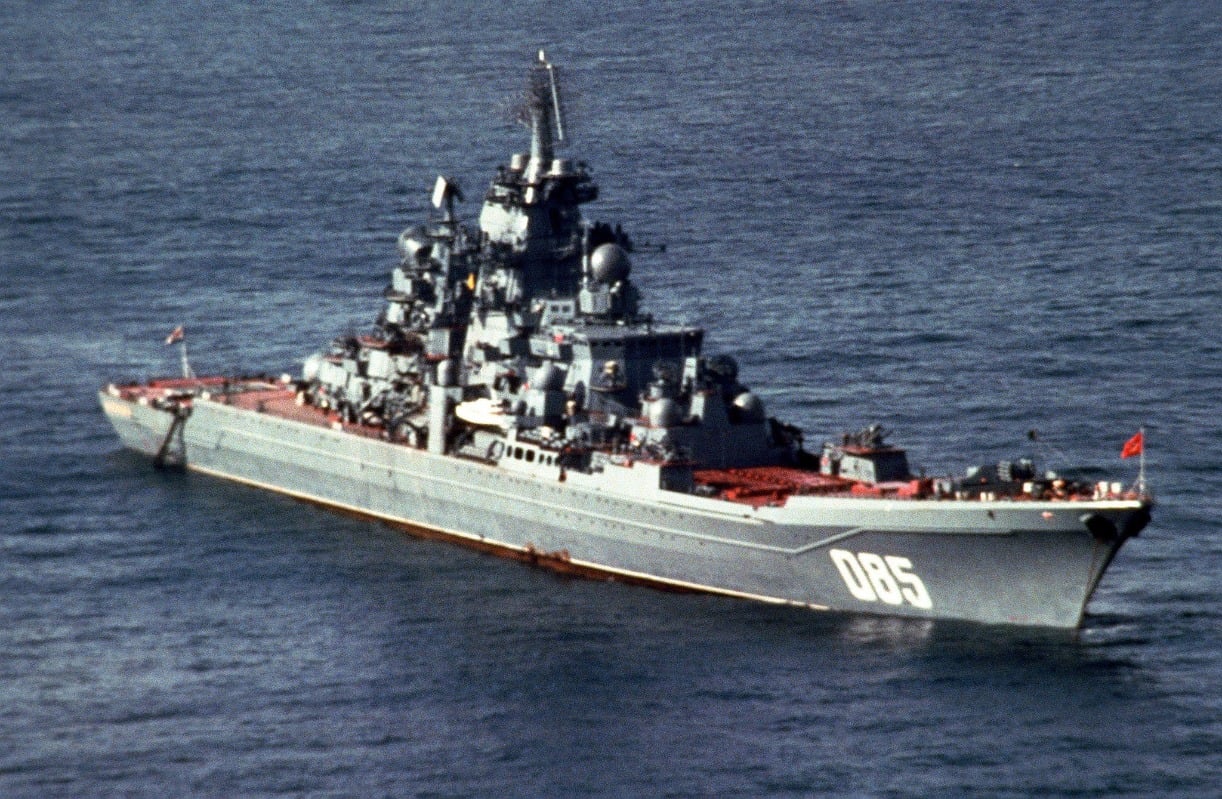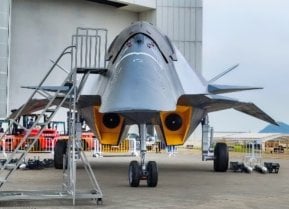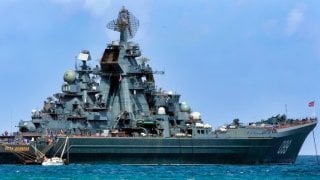Kirov-Class Battlecruiser Might Be 'Sunk' Thanks to Ukraine War
Western sanctions are straining Russia’s military-industrial complex, as demonstrated by the prolonged refit of the Admiral Nakhimov, a Kirov-class nuclear-powered battlecruiser.
What You Need to Know: Western sanctions are straining Russia’s military-industrial complex, as demonstrated by the prolonged refit of the Admiral Nakhimov, a Kirov-class nuclear-powered battlecruiser.

-Initially scheduled for sea trials in 2018, the project has missed multiple deadlines, with costs estimated between $2 billion and $5 billion.
-This refurbishment has drained resources, hampering Russia's ability to maintain or build modern warships. While the Kremlin sees the project as a matter of national pride, experts argue the ship’s Cold War-era design is ill-suited for 21st-century warfare.
-Western observers see value in Russia continuing the project, as it diverts resources from more relevant naval advancements.
Western Sanctions Are Taking a Toll on Russia's Navy
It has repeatedly been questioned whether the sanctions imposed on Russia following its unprovoked invasion of Ukraine in February 2022 have had any impact on its war effort. It is very much true that Russia is now depending on North Korea to bolster its forces, and has relied on Iranian-made drones.
But there is now another sign that the sanctions are taking their toll on the Kremlin. The Russian Navy's largest warship, the Project 1144 Orlan Kirov-class nuclear-powered battlecruiser Admiral Nakhimov has been undergoing a major restoration, one described as a "mega project" and it has been unable to meet any planned deadlines.
The warship has been languishing in drydock since 1999, and work only began on the Cold War-era warship in 2015. At the time, a goal was set for the warship to begin sea trials by the end of 2018. The Kremlin failed to meet that deadline, and then in 2022, it announced it was on track for 2023 and then 2024. As recently as August, Russian Navy officials said the ship would begin its factory sea trials on November 15.
That latest deadline was missed. Russia has blamed ice formation in the waters of the White Sea, where the factory trails would be conducted. It has also been suggested crew training needs to be completed.

A more likely explanation is that the warship's refit simply hasn't been concluded – and there is little reason to believe otherwise.
It is almost certain that Admiral Nakhimov won't sail this year, and it seems increasingly unlikely it will sail next year. Accounts vary on how much Moscow has spent refurbishing the aging warship, but it has become a true hole in the water with between 200 billion and 500 billion rubles ($2 billion to $5 billion) spent to date. The modernization costs have been so high that it has likely impacted the Kremlin's ability to maintain and build other vessels.
National Pride on the Line
The decision to continue the modernization of Admiral Nakhimov was made even before the Kremlin decided to retire her sister Pytor Velikiy, but that has only led to some in the Russian Navy remaining committed to the effort when all signs have suggested it shouldn't have ever begun the costly program.
There has been speculation that it is a matter of national pride.
The Russian Navy's sole aircraft carrier Admiral Kuznetsov is a floating joke, and it is also unlikely to return to service. Yet, even if it does, it lacks the capabilities, range, and endurance of any of the U.S. Navy's nuclear-powered carriers. Thus Moscow has put its hopes on its remaining battlecruiser, which could give it some bragging rights – as in having the largest surface combatant (that isn't a flattop) in service. It likely would like to sail the warship to foreign ports – like the guided-missile frigate Admiral Gorshkov was able to do earlier this year.

The presence of that warship in Cuba captured headlines and no doubt Russia would like to make a bigger statement by sending Admiral Nakhimov on a globetrotting voyage.
It won't happen next year, even if the warship were to begin sea trials, which would last for the better part of a year. But it is also unlikely to happen at all. Should the warship return to service, it will be like the Sukhoi Su-57 (NATO reporting name Felon) and the T-14 Armata main battle tank (MBT), as in platforms that the Kremlin brags about but won't send anywhere near the frontlines in wartime.
On paper, the battlecruiser is a capable vessel and one that could be a threat in a time of war – of course, if that war were being fought in the 1980s. But today, it would also be a huge target. Russia has bragged about the capabilities of its hypersonic weapons, but the U.S. is developing those too, while NATO submarines could easily track and then sink the vessel.
Russia would be advised not to throw away any more money into a warship that may never sail, and even if it does isn't suited to 21st-century combat. Yet, from the American point of view, there is hope that the Kremlin will pour good money after bad into the battlecruiser. Every rubble spent on Admiral Nakhimov is one less spent on more capable vessels.
Author Experience and Expertise: Peter Suciu
Peter Suciu is a Michigan-based writer. He has contributed to more than four dozen magazines, newspapers, and websites with over 3,200 published pieces over a twenty-year career in journalism. He regularly writes about military hardware, firearms history, cybersecurity, politics, and international affairs. Peter is also a Contributing Writer for Forbes and Clearance Jobs. You can follow him on Twitter: @PeterSuciu. You can email the author: [email protected].
Image Credit: Creative Commons and/or Shutterstock.
From the Vault


